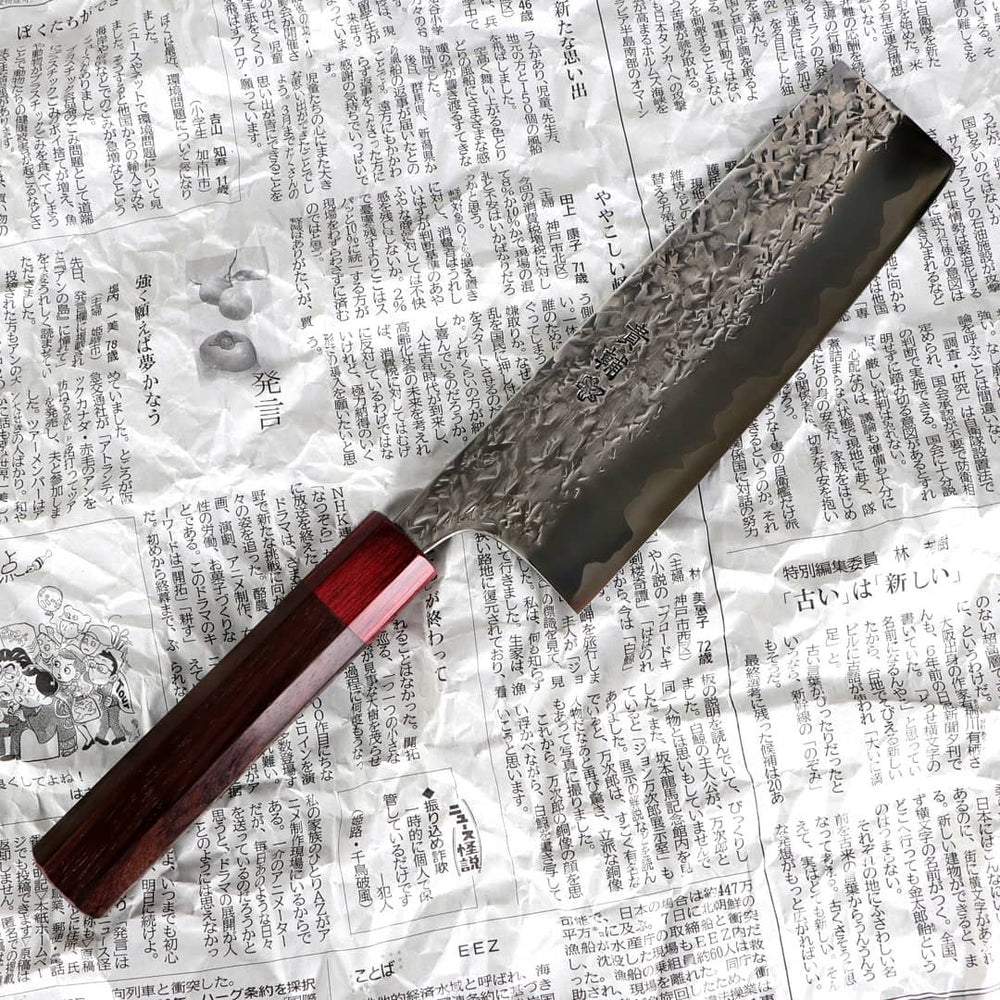Japanese Knives vs. Western Knives
Japanese Knives vs. Western Knives
Not only Japanese knives are famous all over the world, but also Western knives - e.g. from Germany - enjoy a high reputation. It is clear that the respective knives originated from different cultures. The Japanese are precision workers who want to have the perfectly fitting blade at hand for every purpose (e.g. Nakiri vegetable knife, Santoku knife, etc.), while Europe and North America traditionally produce versatile, rather heavier chef's knives. Further differences between Japanese kitchen knives and their Western counterparts are explained in the following article.
Japanese Chef's Knives - the Knife Steel
In addition to the appealing appearance and the wide variety of variants, a Japanese knife is known above all for one characteristic: The sharpness of the blades. The excellent sharpness of Japanese kitchen knives can be attributed to the knife steel used. Japanese knife steel is particularly hard due to its generally high carbon content and is used for the blade core. Japanese kitchen knives reach up to 68 HRC on the Rockwell scale. This value is significantly higher than that of conventional Western knife steel. Anyone who cuts with a well-sharpened Japanese knife for the first time will wonder why he has spent his life handling blades that are dull by comparison. However, Japanese chef's knives are not only sharper than Western knives, but also retain their sharpness over a longer period of time.
In comparison, Western knives focus more on sturdiness and ease of care. A German knife, for example, is made of a softer steel. This steel does not achieve the sharpness of a Japanese kitchen knife and also needs to be sharpened more frequently. On the other hand, a Western knife has the advantage of being easier to care for. The lower carbon content in the steel ensures that the blade hardly accumulates rust.
Basically, Japanese chef's knives are also significantly lighter than Western knives. In German knives, the steel often extends through the entire handle, which results in a correspondingly high weight. A heavier weight offers the advantage that the knife contributes a certain amount to the cutting work by gravity alone, but in principle a heavy knife will cause fatigue more quickly than a lighter one. In addition, a well-sharpened Japanese chef's knife will cut through food so effortlessly that you don't need the added effect of the blade's gravity. Japanese knives are designed for precision and balance. They are designed not to tire the chef, but to allow him to perform food cutting without effort and with great precision and safety.
The Grind of Japanese and Western Knives
Due to the different characteristics of Japanese and Western knife steels, the respective knife blades are also ground differently. Western knives are usually ground on both sides, whereas the Japanese knife is often ground on one side.
Due to the hardness of the knife steel used, the grinding angle of Japanese knives can be chosen smaller than for Western knives. This applies to both one-sided and double-sided Japanese knives. This very fine grind makes extremely clean cuts possible, which is noticeable when preparing sushi or cutting vegetables and fruit, for example. You will notice that the Japanese chef's knife, like the Santoku knife, hardly damages the cells of the food, so that, for example, hardly any juice escapes from tomatoes or your eyes suddenly stop watering when cutting onions. Western knives are sharpened with larger angles due to the softer steel. They are therefore not as sharp as Japanese kitchen knives.



